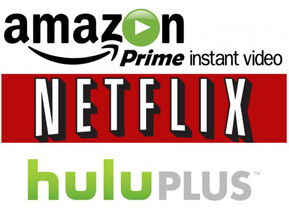Intermittent Issues: I, For One, Welcome Our New Binary Overlords
By Ben Gruchow
November 10, 2016
Like most advancements in the technological world, we can attribute the ascension of streaming media in the home to sex appeal. In 1999, Victoria’s Secret webcasted their annual fashion show live for the first time. If you’ve read the previous column in this series, about codecs and generations of streaming media, you have a pretty good idea of what to expect from a live webcast in the late 1990s qualitatively; it was godawful. Still, with an estimated 2 million viewers, it was a massive hit for the time.
This is meant to give us a quick look at where streaming, in effect, started. The technology did not follow a linear path to the minefield of streaming apps we have access to; the streaming-media industry fell victim to the same bubble and crash that impacted the dot-com industry in 2000, and years would pass before revitalization. Our current incarnation of this technology owes its existence to some of the behind-the-scenes machinations during this period of dormancy, and to the development of adaptive HTTP-based streaming in particular.
This adaptive streaming method - using the existing HTTP protocol to deliver content in small chunks based on the bandwidth availability at any given moment; we can look at the previous column’s illustration of video data layering to get a good impression of how this works with high-quality content - was transformative. Gone was the impedance of buffering, which is a process that halts video playback while a certain volume of content is temporarily cached and readied locally for playback, and the foregone conclusion that a region without competitive broadband speeds would be effectively locked out of high-quality streaming video.
If you were to utter the phrase “Lazy Sunday” to someone today, in 2016 - at least, someone who doesn’t make entertainment intake and analysis part of their daily routine - what you’d likely get for a response would be hazy recollection. “Lazy Sunday” is, of course, one of the first of the Saturday Night Live’s Digital Shorts, three- to four-minute satirical riffs on various pop culture targets that were frequently the most tonally on-point and almost certainly the best-produced material of any episode in which they aired. This first one was especially notable in what it did for the visibility of a video streaming website that had seen its first millionth view only three months prior. YouTube was gaining in popularity on its own, but the appearance of the “Lazy Sunday” sketch on the site provided a major milestone in being the first time that broadcast content was available on demand, for free, from such a wide platform. It was also an unofficial milestone; the video was not sanctioned by NBC, and its subsequent removal led to the creation of YouTube’s Content Verification Program.
At this point, a user who uploaded copyrighted material to the site stood a pretty good chance of having that material removed by YouTube, ostensibly at the request of the studios (the tool was created specifically to allow for multiple requests for removal at once). This development got a negative reception from the YouTube community, but it had a clear argumentative precedent (if the early days of VHS and DVD were beset by ringing concerns of how piracy would compromise revenue from the market ultimately proved groundless, that doesn’t change the fact that they were made).
Continued:
1
2
3
4
5
6
7




